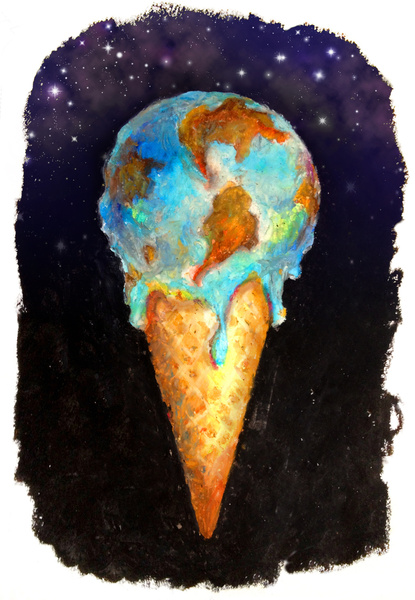 Overcast with some occasional thin-ass sunshine this Tuesday afternoon on California’s north coast, and another mundane summer-weather episode for us.
Overcast with some occasional thin-ass sunshine this Tuesday afternoon on California’s north coast, and another mundane summer-weather episode for us.
Not so last weekend down southern-California way — Science writer Bob Henson at WunderBlog this morning:
Amazingly, the past weekend produced more rain in San Diego than the previous 100 Julys combined (1915–2014).
This was also more rain than the year’s wet-season months of January, February, and March managed to cough up.
Downtown Los Angeles notched 0.38” over the weekend, its greatest monthly total for any July in records going back to 1877 (the previous record was 0.24” in July 1886).
In that entire 139-year period, the station recorded a total of 1.17” of July rain, with close to a third of it falling this year.
(Illustration above found here).
Even in needing the all that water in this age of massive drought, like a shitload of stuff, there’s side-effects:
The spirit-boosting effects of the rain were accompanied by some rare disruptions, including a bridge collapse along Interstate 10 in far southeast California and the first rained-out pro baseball game at Anaheim’s Angel Stadium since 1995.
And that’s just a surface glance — flooding, mudslides, road closures, on and on. And Henson warns of the immediate future: ‘As unusual as the rain was, there could be even more to come in the next several months, as an already-strong El Niño event continues to gather steam. Records for Southern California from the past century show that the risk of impact from Pacific tropical storms and hurricanes is greater during El Niño years. History also tells us that we can’t rule out the possibility of a full-blown hurricane coming ashore: this apparently happened in 1858, long before the region was densely populated.’
In this past weekend’s festivities, only the remnants of former Hurricane Dolores added fuel to the storms.
And further to fuel the heat from a strong El Niño, apparently the oceans are warming faster than predicted/forecast just a few years ago — via Slate yesterday afternoon:
The study — written by James Hansen, NASA’s former lead climate scientist, and 16 co-authors, many of whom are considered among the top in their fields — concludes that glaciers in Greenland and Antarctica will melt 10 times faster than previous consensus estimates, resulting in sea level rise of at least 10 feet in as little as 50 years.
The study, which has not yet been peer-reviewed, brings new importance to a feedback loop in the ocean near Antarctica that results in cooler freshwater from melting glaciers forcing warmer, saltier water underneath the ice sheets, speeding up the melting rate.
Hansen, who is known for being alarmist and also right, acknowledges that his study implies change far beyond previous consensus estimates.
In a conference call with reporters, he said he hoped the new findings would be “substantially more persuasive than anything previously published.”
I certainly find them to be.
And seemingly a separate study coming to the same conclusions — one of the authors of that research, John Abraham from University of St. Thomas, wrote via the Guardian, also yesterday:
As I have said many times on this blog, if you want to know how much “global warming” is happening, you really have to be able to measure “ocean warming”.
That is because more than 90 percent of the excess energy coming to the Earth from greenhouse gases goes into the ocean waters.
My colleagues and I have a new publication, which better characterizes this heating and also compares climate model predictions with actual measurements.
It turns out models have under-predicted ocean warming over the past few decades.
Rain and sea-level rise — sounds of summer?